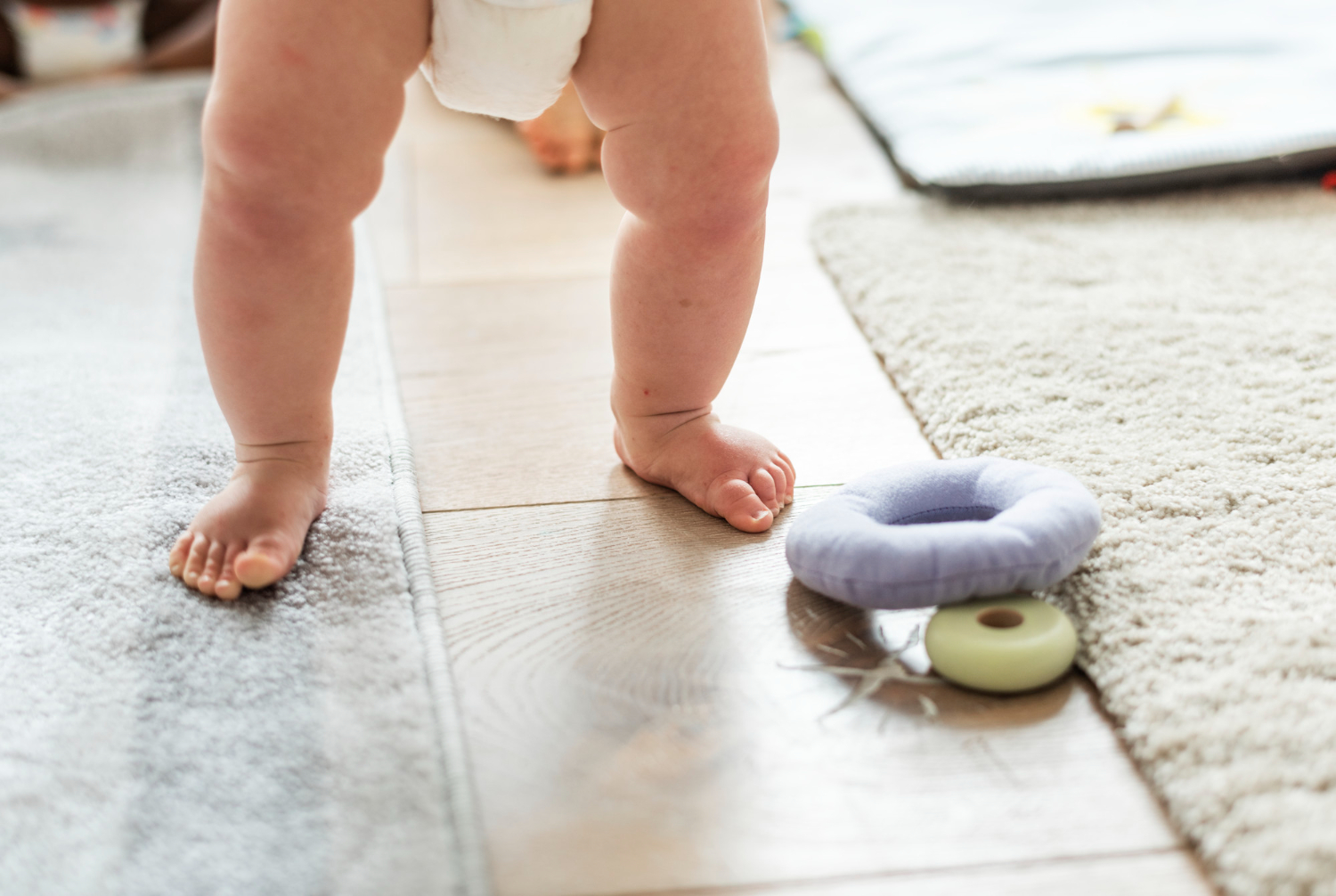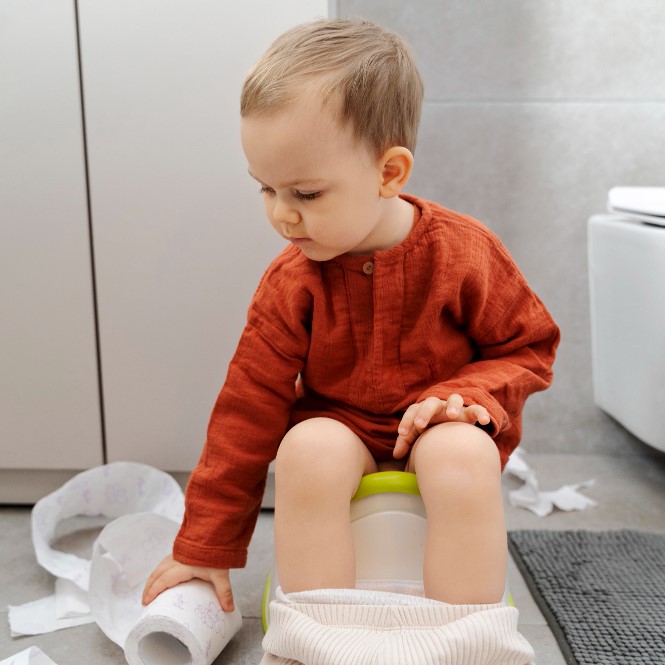Many children with autism are difficult to toilet train. Parents and teachers have tried many approaches to teaching children to use the toilet independently. Not all children respond to the same teaching techniques. A helpful method in one child’s situation may not be useful in another. TEACCH consultants are often asked for suggestions for successful toilet training. This article is a compilation of several experienced teachers’ and consultants’ suggestions about this area of programming.
In thinking about setting up a program to help a child learn to use the toilet independently, the first TEACCH recommendation would be to look at the problem from the perspective of the student with autism. Another TEACCH recommendation would be to build in many elements of visual structure to help the child understand exactly what is expected. Look at each element of Structured Teaching to decide how visual supports can be added to build positive routines, clarify expectations, and reduce confrontational situations.
The Child’s Perspective
Even in typically – developing children, toilet training is often a difficult skill to master. While the child may have good awareness and control of his body, other factors, such as social factors, determine how easily toileting skills are learned. Small children do not feel an intrinsic desire to become toilet trained. Rather, they acquire this skill to please their parents and gain the social status of ” big boy” or “big girl.” This social motivation is critical in determining “readiness” for toilet training.
How might the characteristics of autism contribute to a child’s difficulty in learning to use the toilet independently?
1. The child’s difficulty understanding and enjoying reciprocal social relationships would certainly interfere with this process. While other 2- or 3-year- olds might be proud of their “big boy pants” and might be happy to please their parents, this type of motivation is rare in a child with autism.
2. Given the characteristic difficulties in understanding language or imitating models, a child with autism may not understand what is expected of him in the toilet.
3. A child with autism typically has significant difficulty organizing and sequencing information and attending to relevant information consistently. Therefore following all the steps required in toileting and staying focused on what the task is all about are big challenges.
4. Further, the child’s difficulty in accepting changes in his routines also makes toileting a difficult skill to master. From the child’s point of view, where is the pressing need to change the familiar routine of wearing and changing a diaper? After 3, or 4, or 6 years of going in the diaper, this routine is very strongly established.
5. A child with autism may also have difficulty integrating sensory information and establishing the relationship between body sensations and everyday functional activities. Therefore he may not know how to “read” the body cues that tell him he needs to use the toilet. He may also be overly involved in the sensory stimulation of the “product”— smearing feces is not uncommon in young children with autism. The child may also be overwhelmed by the sensory environment of the toilet, with loud flushing noises, echoes, rushing water, and a chair with a big hole right over this water! A further consideration is that removing clothing for toileting may trigger exaggerated responses to the change in temperature and the tactile feeling of clothes on versus clothes off.
Elements of Structured Training
Structured Teaching is the term given to a set of teaching/support tools designed for people with autism. These tools are responsive to the characteristics of autism using their strong learning modalities (visual and motor skills and enjoyment of routine) to build bridges over some of the gaps in learning caused by their characteristic deficits. Structured Teaching not only increases the learning of new skills but also increases independence and self-esteem, reducing behavior problems resulting from confusion, anxiety, and over-stimulation. Structured Teaching combines individualized assessment, the establishment of proactive and adaptive routines, and the systematic use of visual supports to support learning.
Initial Stage: Assessment
When hoping to toilet train a child with autism, we must first define a realistic goal, realizing that independent toileting may be many steps down the road. Each of the steps toward independent toileting is a goal itself. Observing and assessing the child’s understanding of the toileting process is necessary to choose the correct starting point. We should establish a positive and meaningful routine around toileting and collect data about the child’s readiness for scheduled training or independent toileting. A simple chart can be used to collect the data needed about the child’s readiness. On a routine basis, the child is taken to the bathroom for a “quick check” every 30 minutes, and data is recorded on each occasion. Of course, you don’t have to wait an entire hour. Anytime you think he is wet, check him, write in the time on the chart, and record the results. Over a period of 1 or 2 weeks, patterns of data begin to emerge.
- Is the child dry for significant periods?
- Is there some regularity in his wetting/soiling?
- Does he show any indication that he is aware of being wet or soiled?
- Does he pause while wetting or soiling?
A child for whom the answer to all of these questions is “no” is probably not ready for a goal of independent toileting. However, a goal of establishing a positive bathroom routine may still be very appropriate. During the charting phase, we should also be assessing other aspects of the process of toilet training. As the data is being collected,
- Is the child beginning to pick up on the routine involved?
- What are the child’s dressing skills?
- Does he show any particular fears or interests related to the bathroom (reaction to flushing, water, toilet paper roll, or other bathroom fixtures)?
- What is his attention span?
At the end of this assessment period, we will have the data needed to establish an appropriate goal to work toward. A task analysis of the steps of toileting can give a picture of all the skills needed. Assessing the child’s current skills on each task analysis step will help us choose a realistic goal and remind us not to try to work on several new skills at once. Task analyses can be global or very specific. Each task analysis step can be further detailed to determine teaching steps. Examples of global task analysis and a more detailed analysis of one step are as below.
1. Enter the bathroom
2. Pull clothes down
- Allows Adults to pull
- Pull from calves
- Pull from knees
- Pull from thighs
- Pull from hips
- Pull from the waist
3. Sit on the toilet
4. Get toilet tissue
5. Wipe with tissue
6. Stand up
7. Throw the tissue into the toilet
8. Pull clothes up
9. Flush toilet
Another important step in teaching independent toileting is to plan a way for the child to initiate the toilet sequence. At first, trips to the bathroom may be initiated by an adult directing the child to a transition object or schedule. However, eventually, the child will need a way to communicate his need to go independently. Even though he may begin to go into a familiar and available bathroom spontaneously, he needs to learn a concrete way to communicate this need so that he can request when a toilet is not immediately available.
Many children learn to use expressively the same tool that the adult has used to teach them about going to the toilet. For example, if Mom has been giving him an empty “baby-wipe” box to mean it is time to transition into the bathroom to be changed, the child might begin to use this same box to let Mom know he needs to be changed. Or, if a photograph of the toilet has been used on the child’s schedule to tell him when it is time to sit on the toilet, the same photograph will make a meaningful expressive communication tool.
A child who can sometimes verbally say “bathroom” may not always be able to pull this word up at the appropriate time. When he is tired, in a new place, with a new person, with too many people, catching a cold, or upset for any reason — his higher-level verbal skills may fail him. A child who shows this inconsistency will also be helped by visual support that (1) helps cue the word he is looking for and (2) serves as a backup system when he cannot use verbal language.
Hope this helps!
Best regards,
Gayane Zakaryan, Head of Rehabilitation Services, “ArBeS” Healthcare Center




